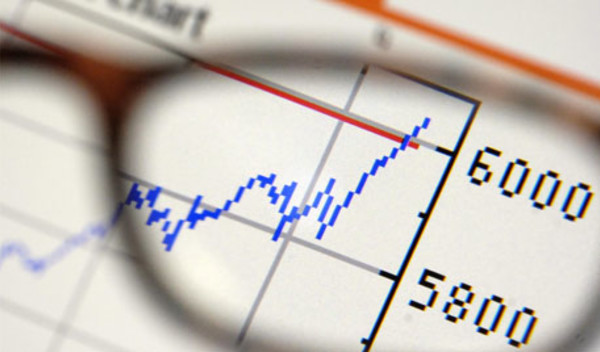

Volatilityis taken to be standard deviation (SD), a mathematical term describing the amount of variance around a mean of a set of data. It is widely used for many purposes in statistical analysis but in financial services we commonly use it to describe the extent to which an asset’s price has varied from its average return over a period.
Many advisers use volatility data as one input when building portfolios for clients. In these portfolios a lower overall volatility figure is often taken to predict reduced variance – or movement – in returns in the future.
If a large series of data points (monthly price changes, for example) is plotted on a chart according to how frequently a particular value occurs, the results will typically plot as a bell curve, as in Graph 1. While a few values will be extremely high or extremely low, most will be clustered somewhere in the middle. By adding all the values together and dividing the result by the number of values, we find the mean, which is the average return in each period, although it is entirely possible the average return figure was not actually achieved in any of the periods.
As we can see in Graph 1, The SD of the data series measures the extent to which the actual values are clustered around the mean value – a low SD means that they are all close together while a high SD will arise if they are widely dispersed and the returns vary a lot from one month to the next.
Assuming a normally distributed data set, where the curve is symmetrical, two thirds of the time, the actual return for a period will fall within one standard deviation either side of the mean. 95 per cent of the time, the return will be within two standard deviations of the mean and 99 per cent of the time within three. This is best illustrated with a few examples:
Table 1 shows the average returns and SDs of the FTSE All Share Index between February 1955 and January 2015, sampled at various frequencies.
Let’s look at the monthly data (top row in Table 1). The average return is 1.07 per cent for each month. However, during that period, these monthly returns had a standard deviation of 5.38 per cent. That meant that two thirds of the time, it varied between +/- 5.38 per cent either side of 1.07 per cent, so between -4.31% and 6.45%.
As we look at the other frequencies, we must remember we are sampling the same data series less frequently, so the period returns and the period standard deviation will be different. Same data; different frequency. Money Management publishes average monthly volatility data for 36 months (top row in the Table). Other providers (for example, Morningstar’s website) provide average annual data over three years (bottom row in the Table).
One frequency is not right or more accurate and the others wrong or less accurate, as they all use the same data; they just express it differently. While the underlying data is the same, different data sets are not interchangeable.
The third row (labelled ‘Annualised return’) is highlighted in the table. In this instance it has been estimated from the monthly data which is why the annualised return and the actual annual return are slightly different.
Volatility has its limitations. Higher volatility does not necessarily mean a higher return. It just means that there has been more movement in the values around the mean. What is inside a fund’s portfolio will affect the volatility of the fund’s price. Funds are made up of shares, cash, fixed interest investments, derivatives etc, which are traded by the fund manager.
Many of these investments are listed on exchanges, not necessarily in London but usually on a recognised exchange around the world. As such the investments can be easily valued and their price movements monitored, enabling performance and volatility to be measured over time.
However, there may be other assets held inside a fund which are unlisted or unquoted investments. While there is often a defined method of calculating the values of these investments, there is an element of uncertainty as to their true market price because, without a free market to set them, the directors of the individual underlying companies help to estimate the share price of their companies. We saw an extreme example of this with Arch Cru. While the market was falling, the value of the fund apparently rose steadily until the basis of valuation was readjusted and the fund’s price collapsed.
Other factors such as a change in the fund manager, a change of the fund’s investment objective, style drift and the impact of portfolio turnover (the costs of transactions inside the fund) will all have an impact on the future volatility. Some of these changes may even make the existing volatility figures irrelevant as a predictive tool as they are based on actual past performance which occurred before the changes took place.
Past performance is not a reliable predictor of the future. There is plenty of academic research evidencing this. Volatility is based on this same set of past performance data and so arguably volatility is not a good predictor of future volatility
We can see from Graph 2 showing the FTSE All-Share Index plotted with UK Treasury Bills, that risk and returns are related. There is plenty of research evidencing this too. It tells us nothing about what will happen in the future though.
In my experience advising, clients wanted maximum returns for minimum risk. One of the roles of an adviser, is to educate clients about how risk and potential returns will affect their financial future. I’m not suggesting that you explain the in-depth nature of volatility to all your clients – not unless they are very technically minded and want to know.
If you do decide to do so, you need to ensure that you understand it fully though, as nothing will undermine your credibility like introducing a subject of which your own comprehension is revealed to be inadequate.



